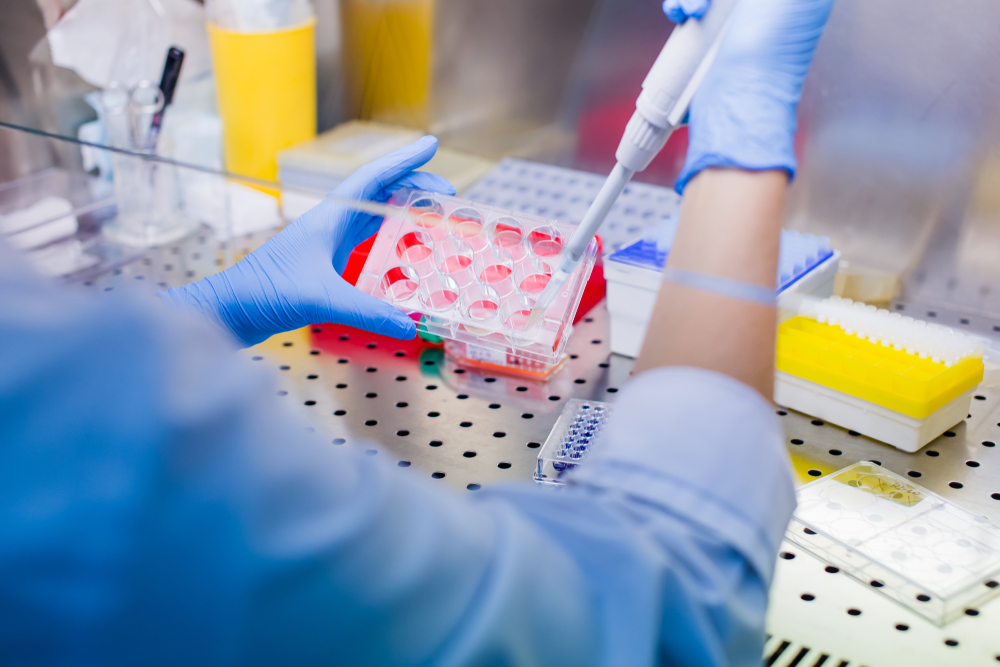Media release
From:
Lung and heart stem cell research paves way for new COVID-19 treatments
Research at a Glance:
- Melbourne researchers have used heart and lung stem cells infected with SARS-CoV-2 to better understand how the disease impacts different organs, paving the way for more targeted treatments for COVID-19
- The findings showed the responses to SARS-CoV-2 varied significantly depending on the cell type, allowing the team to identify effective anti-viral drugs to treat infection in heart and lung stem cells
- The study identified Alectinib and SPHINX31 as promising drugs to treat SARS-CoV-2 infection in both heart and lung cells
- The researchers stated the findings highlighted the importance of testing several cell types to determine optimal drug combinations for effective treatment of a virus that affects multiple organ systems
Melbourne researchers have used heart and lung stem cells infected with the virus that causes COVID-19 to better understand how the disease impacts different organs, paving the way for more targeted treatments.
The research, co-led by Murdoch Children’s Research Institute and the Peter Doherty Institute for Infection andImmunity (Doherty Institute), found the responses to SARS-CoV-2 varied significantly depending on the cell type,allowing the team to identify effective anti-viral drugs to treat infection in heart and lung cells. The findings were published in the 10th anniversary edition of Stem Cell Reports.
Murdoch Children’s Associate Professor David Elliott, also a principal investigator at The Novo Nordisk FoundationCenter for Stem Cell Medicine (reNEW), said discovering that COVID-19 triggered variable cellular responses in different organs would provide new insights into treatment strategies.
“To further our knowledge on the impact of SARS-CoV-2 on different organs, we engineered human stem cells in the lab into lung and heart cells and infected with them with the virus,” he said.
“We found the heart and lungs exhibit distinct antiviral and toxicity profiles that could inform better COVID-19 therapies and treat its complications.
“Our findings highlight the importance of using several cell types for the evaluation of antiviral drugs to determine the best drug combinations for effective treatment of a virus that affects multiple organ systems.”
The Royal Melbourne Hospital and University of Melbourne Professor Kanta Subbarao, Virologist and Director of the WHO Collaborating Centre for Reference and Research on Influenza at the Doherty Institute, said while SARS-CoV-2 primarily infected the respiratory tract, lung and cardiac complications occur in severe cases of COVID-19.
Prior to the large-scale vaccine rollout in 2020, cardiac complications were observed in up to 78 per cent of recovered COVID-19 patients and ongoing myocardial inflammation in 60 per cent of patients.
“Although COVID-19 vaccines are highly effective in preventing severe illness and death, antiviral compounds are required for the treatment of COVID-19, particularly with the emergence of variant viruses that evade immunity,” Professor Subbarao said.
“To date, only a handful of drugs have been approved for use in hospitalised COVID-19 patients and more are needed.”
The study also looked at approved drugs for treating COVID-19, including Remdesivir and Molnupiravir, with some found to be more effective than others at treating infection in lung and heart stem cells. It identified Alectinib and SPHINX31 as promising antivirals for SARS-CoV-2 in both heart and lung cells.
“We have provided valuable insights into virus-host interactions in tissues that are significantly affected in COVID-19, with implications that will further therapeutic options,” Professor Subbarao said.
Researchers from Monash University, The University of Sydney, The Walter and Eliza Hall Institute of Medical Research, the University of Melbourne and The Royal Children's Hospital also contributed to the findings.
Publication: Rajeev Rudraraju, Matthew J. Gartner, Jessica A. Neil, Elizabeth S. Stout, Joseph Chen, Elise J. Needham, Michael See, Charley Mackenzie-Kludas, Leo Yi Yang Lee, Mingyang Wang, Hayley Pointer, Kathy Karavendzas, Dad Abu-Bonsrah, Damien Drew, Yu Bo Yang Sun, Jia Ping Tan, Guizhi Sun, Abbas Salavaty, Natalie Charitakis, Hieu T. Nim, Peter D Currie, Wai-Hong Tham, Enzo Porrello, Jose M. Polo, Sean J. Humphrey, Mirana Ramialison, David A. Elliott and Kanta Subbarao, ‘Parallel use of human stem cell lung and heart models provide insights for SARSCoV-2 treatment,’ Stem Cell Reports. DOI: 10.1016/j.stemcr.2023.05.007
*The content of this communication is the sole responsibility of the Murdoch Children’s and does not reflect the views of the NHMRC.
Available for interview:
Dr Beth Stout, Murdoch Children’s Research Officer, Heart Disease
Dr Jessica Neil, Doherty Institute Research Officer



 Australia; VIC
Australia; VIC


